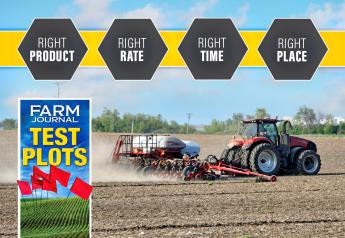Input Availability Could Limit Corn Acres
AgriBusiness 11-26
The U.S. Department of Agriculture says harvest continues as winter begins to close in on the Midwest. With just 5 percent of the major grains left to cut, many producers are shifting focus to 2019.
AgDay TV host Clinton Griffiths spoke with Angie Setzer of Citizens Grain about expectations for the new year. She says planted acres will one key to watch.
"We are talking about planted acres and the crops aren't even harvested," says Setzer.
She's watching two key factors for making those cropping decisions. The first involves the idea that because soybean prices are lower there will be a significant increase in corn planted acres.
"The reality is chemical prices have increased substantially," says Setzer. "When it comes to corn, we can't even as a retailer get our hands on reasonable 28 [percent nitrogen] or 32 [percent nitrogen] pricing opportunities for our customers."
Setzer says typically her employer, Citizen's Grain would be looking at prepay opportunities and booking fertilizer needs for next spring.
"We can't even make an offer at this point because we can't get a hold of it ourselves," says Setzer. "China cleaning up their environmental policies and that's reducing some of the chemical supply that you may have seen coming out of the country."
The second factor in chemical availability is the current trade war between the U.S. and China.
"They're not in a huge hurry to send U.S. supplies," says Setzer.
Banker hesitation may be another factor in whether to plant or corn soybeans.
"Bankers are looking at the fact that you're putting a little bit less capital on the line when it comes to planting soybeans," says Setzer. "Soybeans are [also] a bit more consistent when it comes to a revenue per acre."
Setzer says it's her opinion that soybean acres will only fall by one or two million acres in 2019. That number may still rest in the outcome of trade talks between now and planting.
"Make sure you're not keeping your head in the sand and ignoring some of the [selling] opportunities that may be present right now," says Setzer.







